Common Triathlon Injuries and How to Prevent Them
 Karen Parnell
May 18, 2025
Karen Parnell
May 18, 2025
Common Triathlon Injuries and How to Prevent Them
As a triathlon coach, I've seen firsthand how injuries can derail even the most dedicated athletes.
While triathlon is a demanding sport, many injuries are preventable with the right approach.
Triathlon is a sport that rewards consistency and preparation, but that also means it's easy to fall into overuse patterns or miss red flags. Here’s a breakdown of key injury factors and how to stay ahead of them.
In this guide, we’ll look at how factors like equipment, technique, nutrition, recovery, age, and mental fatigue all play a role in keeping you injury-free and performing at your best.
1. Equipment: The Foundation of Injury Prevention
Your kit can either protect you or set you up for trouble. For example the wrong running shoes may cause Achilles tendinopathy, Plantar Fasciitis or IT band issues – opt for a wide toe box running shoe like the one from Altra can help.
A poorly adjusted bike can lead to lower back pain or patellar tracking problems. Equipment checks and professional fitting services (especially for your bike setup) are worth their weight in gold.
Bini (2016) highlighted the need for a link between bike fitting and injury risk, suggesting that proper bike fitting could potentially reduce the risk of injuries among cyclists.
Wearing an ill-fitting wetsuit or choosing the wrong type for your body or event conditions can restrict movement, especially around the shoulders. This can alter stroke mechanics, increase muscular effort, and raise the risk of overuse injuries or strains in the shoulder region.
Worn-out running shoes can significantly increase the risk of injury. Over time, the cushioning and support structures degrade, leading to altered biomechanics and increased stress on joints and muscles. A study published in the British Journal of Sports Medicine suggests that running in shoes with moderate lateral stiffness can reduce the risk of lower extremity injuries compared to shoes with minimal stiffness.
Additionally, research suggests that alternating between different pairs of running shoes can also lower injury risk. A study from the Sports Medicine Research Laboratory in Luxembourg found that runners who rotated among multiple pairs had a 39% lower risk of running-related injuries compared to those who used the same pair consistently (Malisoux et al., 2013).
Tip: Use motion capture or a bike fit specialist to fine-tune your position, especially if you’ve had recurring injuries.
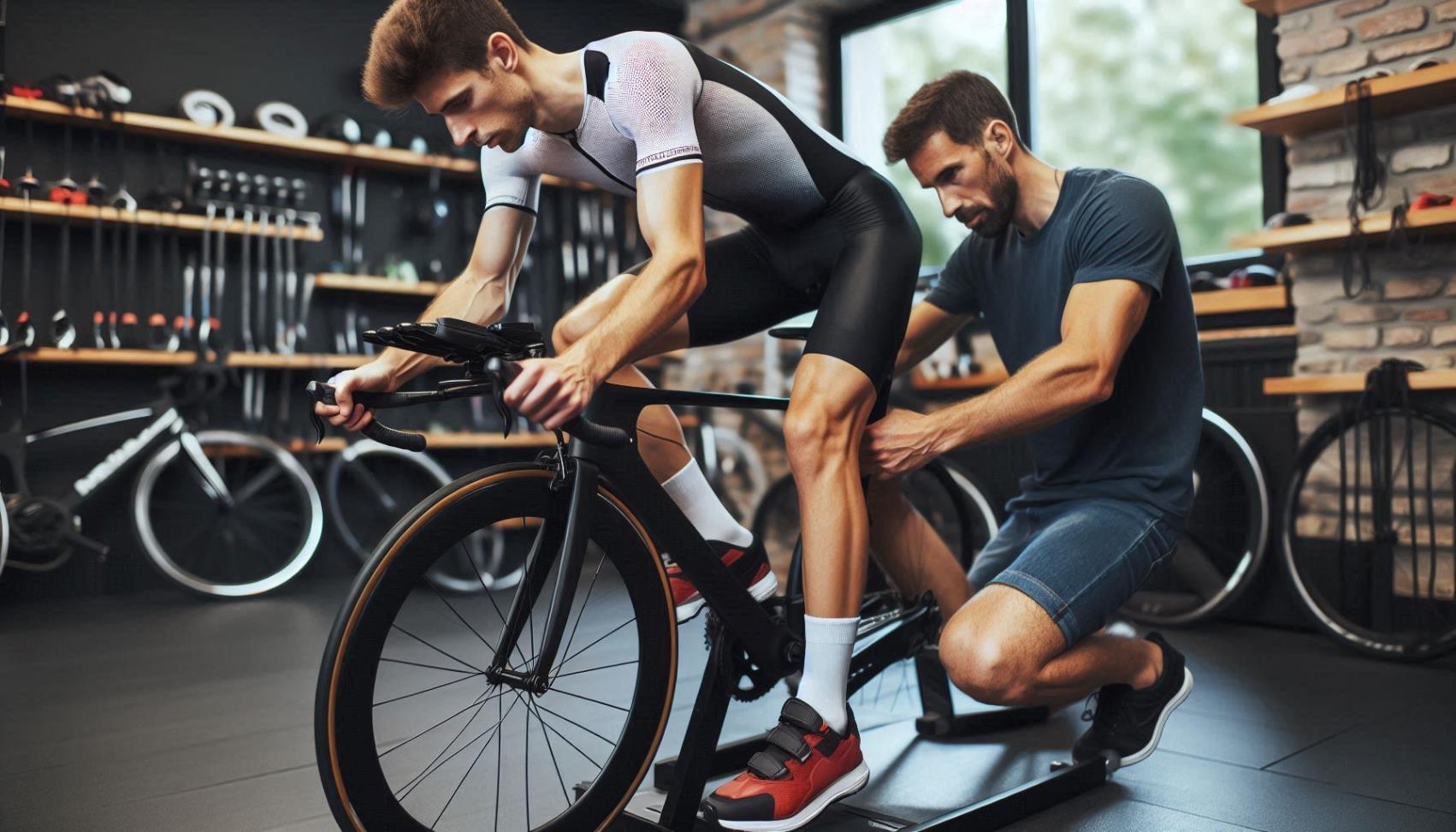
Get your FREE 31 Structures Indoor Cycling Training Sessions and Training Plan
2. Technique: Efficiency Equals Safety
In triathlon, small flaws in technique can build up over thousands of repetitions, eventually leading to injury if not addressed.
- Swimming: Poor shoulder mechanics—like a dropped elbow during the catch or crossing the midline—can cause shoulder impingement. This repetitive strain inflames tendons and limits mobility, making shoulder injuries one of the most common in swimmers.
- Cycling: A dropped hip or flared knee during pedalling often results from poor bike fit, weak core muscles, or leg length differences. These imbalances increase stress on the knees and lower back, potentially causing pain or overuse injuries.
- Running: Overstriding (landing too far ahead of the body) or poor foot strike mechanics create braking forces that strain joints and bones. Over time, this can cause stress fractures, patellofemoral pain, or Achilles tendinopathy, especially when combined with fatigue and insufficient recovery.
Tip: Periodic video analysis can help you fine-tune technique and catch bad habits early. Working with qualified coach is advised.
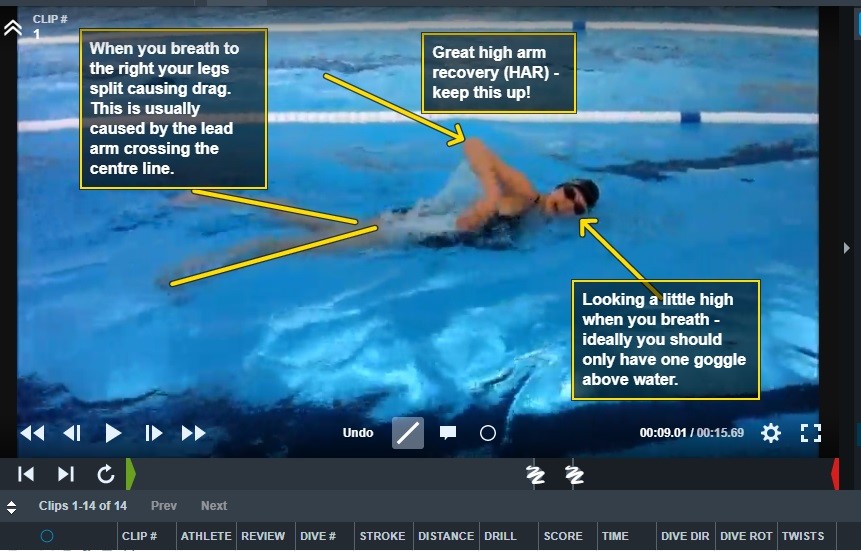
Get your FREE Swim Workouts for Triathletes E-book
3. Sleep: The Unsung Hero of Recovery
Poor sleep compromise’s reaction time, hormone balance, muscle recovery, and mental clarity—all critical factors for athletic performance and injury prevention.
A recent study by Matos et al. (2025) in Healthcare found that endurance athletes with poor sleep quality or less than eight hours of sleep per night had a significantly higher risk of injury and illness. Chronic sleep deprivation also elevates cortisol levels, a stress hormone that can delay tissue repair and impair muscle recovery, increasing the likelihood of overuse injuries. Understanding sleep hygiene is important to a good night sleep.
Tip: Aim for 7–9 hours of high-quality sleep and track it with wearables or a sleep journal.

Get your FREE Guide to Running Speed and Technique
4. Nutrition: Fuelling for Performance and Safety
Carbohydrate intake isn’t just about performance—it also affects brain function. Low glycogen levels can impair decision-making and reaction times, increasing the risk of missteps, crashes, or poor pacing during training and races. Additionally, inadequate protein or overall energy intake can undermine tissue repair and recovery.
A narrative review by Mason et al. (2023) in Nutrients highlights the critical role of both sleep and nutrition in injury risk among athletes, emphasizing that proper energy availability and nutrient timing are essential for effective recovery and injury prevention.
Tip: In long races, aim for 60–90g carbs/hour depending on intensity. Post-training, consume 20–30g protein within 30 minutes.

Download you FREE recipe books
5. Strength, Mobility, and Flexibility: The Movement Triad
Strength training helps reinforce movement patterns, absorb load, and support joints. Mobility and flexibility are equally important for efficient movement and injury prevention.
Triathletes often experience tightness in the hip flexors, hamstrings, and calves—especially as training volume increases.
For older female athletes, strength and plyometric training are essential. Age-related declines in bone density and muscle mass—particularly after menopause—increase injury risk. Resistance and impact training help counteract these changes.
A randomized controlled trial by Kemmler et al. (2015) demonstrated that postmenopausal women benefit significantly from high-intensity strength and plyometric training, showing improvements in bone mineral density and reduced fracture risk, thereby supporting long-term musculoskeletal health.
Tip: Incorporate at least 2 strength sessions per week, focusing on lower-body, core, and balance. Don’t skip impact (plyometric) work like skipping, hopping, or jumping if bone health is a concern.
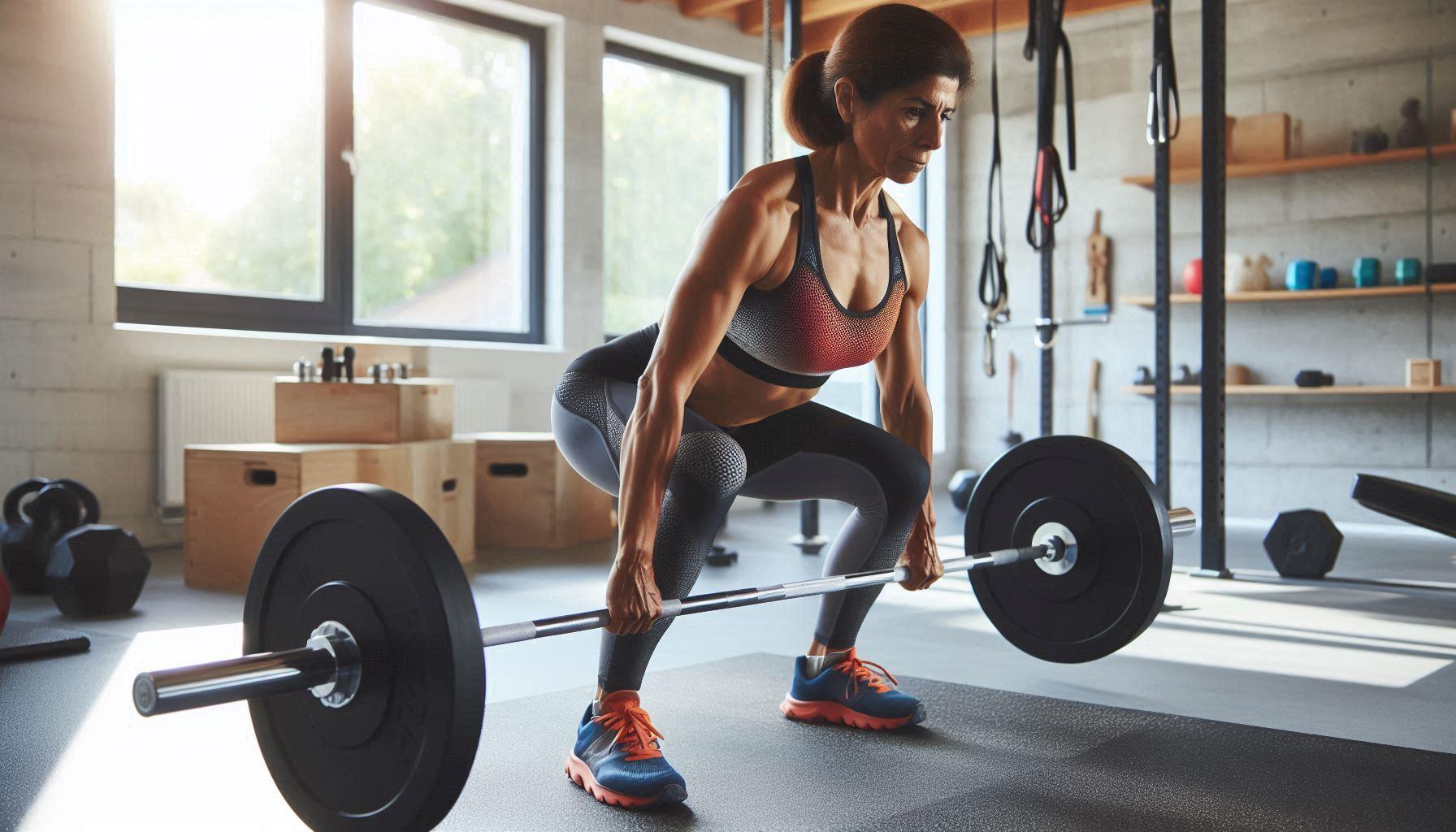
Download your FREE guide to strength and conditioning
6. Adjusting for Age and Stage: Training Smarter Over Time
Your body at 25 is not the same as at 55. Age-related changes affect connective tissue elasticity, recovery time, and injury susceptibility. Training plans should evolve to reflect this.
Example: Older Female Athlete
A woman in her 50s may notice reduced recovery capacity, decreased muscle mass, and slower reaction time. She may also face increased bone fragility due to decreased oestrogen. Her training should include:
- More structured recovery days
- Increased emphasis on resistance training
- Gradual build-ups with less aggressive loading
- Bone-loading activities (e.g., resistance training or plyometric exercises)
- Nutritional strategies to ensure calcium, vitamin D, and protein adequacy
Tip: Periodize your year with more recovery built in. Listen to soreness, energy levels, and sleep quality. Don’t try to match your younger training partner rep for rep. Seek out advice from a qualified coach.
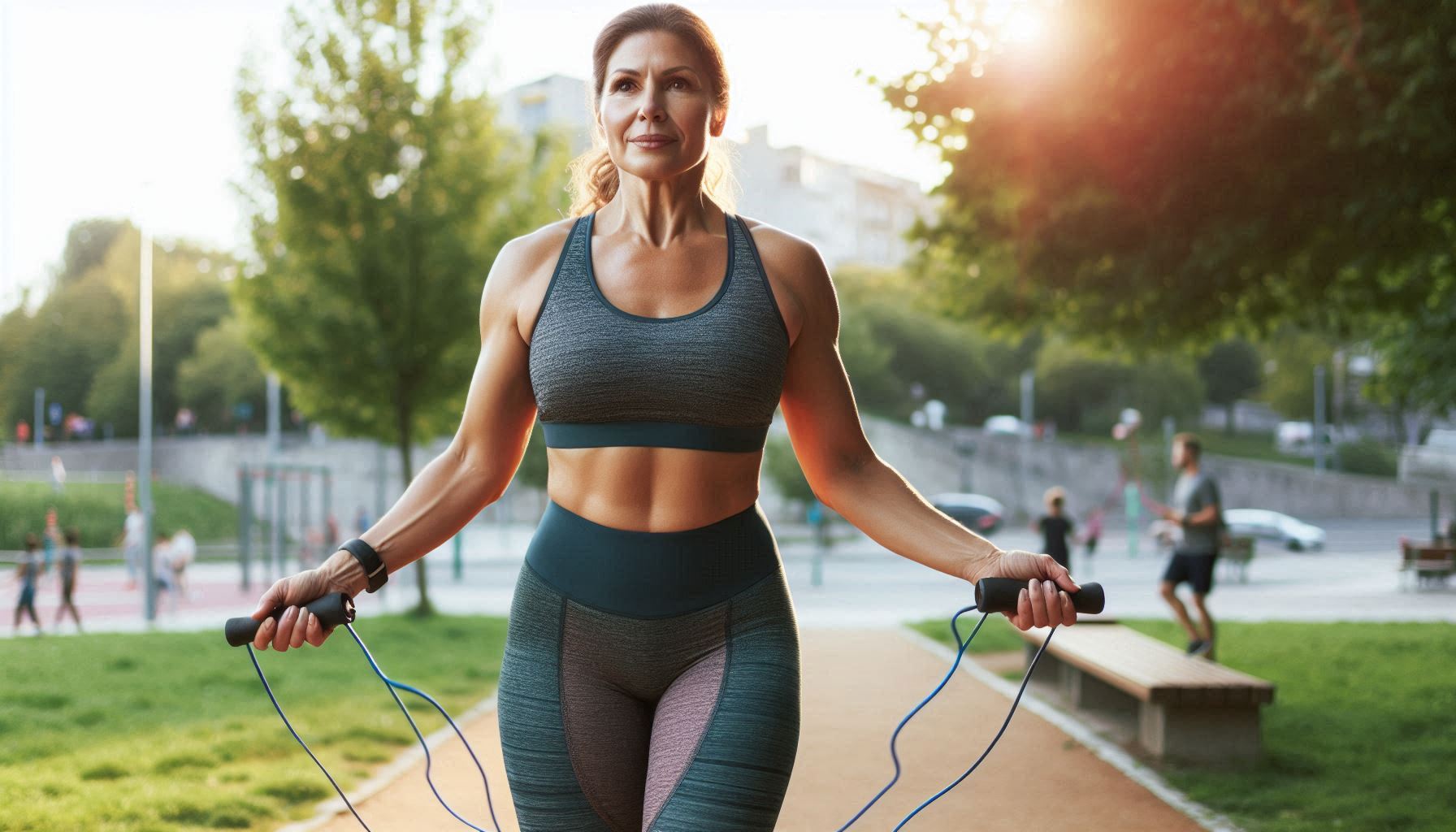
Download your FREE guide to strength and conditioning
7. Mental Endurance and Cognitive Load: Staying Sharp
In long races or hard sessions, mental fatigue can lead to accidents—missing a curb, misjudging a corner, or skipping a warm-up.
A 2025 study in Frontiers in Psychology found that acute mental fatigue “significantly impairs attention and performance” in athletes, demonstrating how prolonged cognitive load reduces motor control and focus, increasing the risk of injury during endurance events.
Tip: Train mental endurance with visualization and race simulations. Stay fuelled and rested to keep your mind sharp on race day.
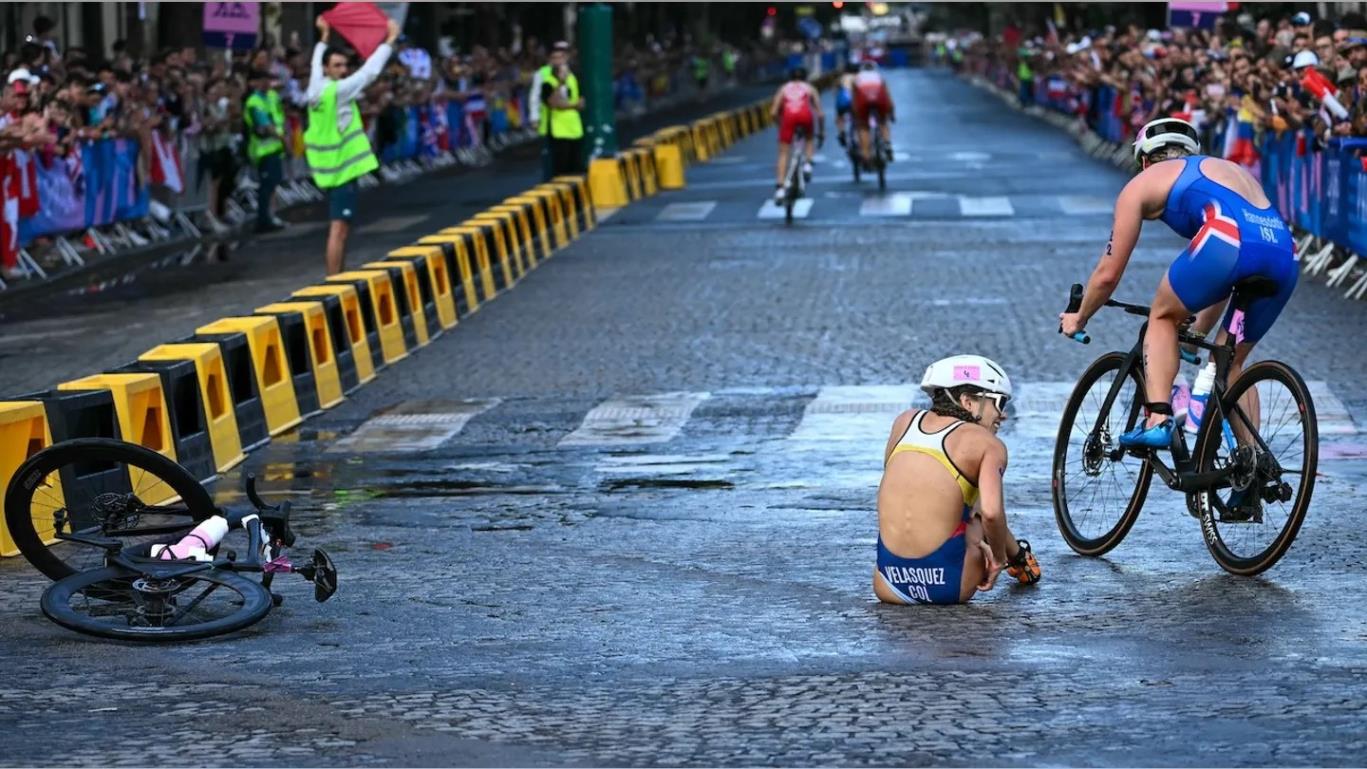
Photo: Ben STANSALL / AFP
8. Overtraining: The Silent Injury Risk
Training is only as good as your recovery. When load chronically exceeds capacity, performance plateaus and injuries creep in. This might look like persistent niggles, mood dips, or disrupted sleep.
Endurance athletes—particularly triathletes—are at high risk of overtraining syndrome. An article in Frontiers in Network Physiology (2021) suggests overtraining is especially prevalent in multisport athletes due to cumulative stress across disciplines.
Tip: Use training logs, Heart Rate Variability (HRV), or subjective wellness scales to track fatigue. Build in recovery weeks and adjust based on how your body responds—not just what the plan says.

Get your FREE Open Water Swimming Sessions E-Book
Conclusion: Triathlon Injury Prevention
Injury prevention in triathlon is multifactorial. It requires smart gear, sound technique, proper recovery, intelligent fuelling, and training that evolves with your age and experience. Addressing the full spectrum—from biomechanics to brain fatigue—allows you to stay consistent, competitive, and injury-free.
Preventing injuries in triathlon takes a whole-body approach. It starts with choosing gear that fits you well and feels right, and practicing good technique in swimming, cycling, and running.
You also need to prioritize recovery and fuel your body smartly so you can perform and think clearly.
As you get older and gain experience, adjusting your training to include strength, mobility, and plyometric work helps protect your muscles and bones.
When you pay attention to everything—from how your body moves to how your mind feels—you give yourself the best chance to stay consistent, avoid injuries, and keep improving race after race.
Karen Parnell is a Level 3 British Triathlon and IRONMAN Certified Coach, 8020 Endurance Certified Coach, WOWSA Level 3 open water swimming coach and NASM Personal Trainer and Sports Technology Writer.
Karen is currently studying for an MSc in Sports Performance Coaching at the University of Stirling.
Need a training plan? I have plans on TrainingPeaks and FinalSurge:
I also coach a very small number of athletes one to one for all triathlon and multi-sport distances, open water swimming events and running races, email me for details and availability. Karen.parnell@chilitri.com
Get your FREE Guide to Running Speed and Technique
Get your FREE Swim Workouts for Triathletes E-book
Get your FREE Open Water Swimming Sessions E-Book
Get your FREE 31 Structures Indoor Cycling Training Sessions and Training Plan
Frequently Asked Questions (FAQ): triathlon injury prevention
Q: How important is having the right gear to avoid injuries?
A: It’s super important! If your bike, shoes, or wetsuit don’t fit you properly, they can cause strain and limit how you move, which can lead to injuries. Getting a professional bike fit and swapping out worn shoes regularly really helps keep you comfortable and safe.
Q: Can improving my technique actually help me stay injury-free?
A: Absolutely! Even small technique issues in swimming, cycling, or running can add up over time and cause joint or muscle problems. Working with a coach or doing regular form checks can make a big difference.
Q: Why should I focus so much on recovery?
A: Because your body needs time to heal and get stronger. If you don’t rest enough, you risk overtraining, which can leave you feeling tired, moody, and more likely to get hurt.
Q: How does what I eat affect my chances of getting injured?
A: What you eat fuels not just your muscles but your brain too. Running low on carbs can mess with your decision-making and reaction time, which can lead to accidents. Plus, getting enough protein and energy helps your body repair itself.
Q: I’m getting older—what should I do differently to avoid injuries?
A: As you age, especially if you’re a woman going through menopause, strength and plyometric training become even more important to keep your bones and muscles strong. Adding these exercises helps protect you from injury.
Q: Can feeling mentally tired really cause injuries?
A: Yes! When your brain is fatigued, you’re more likely to make mistakes like missing a curb or misjudging a turn. Managing mental fatigue during long or hard sessions helps keep you sharp and safe.
Q: How should I change my training as I get older?
A: Listen to your body and include more strength, flexibility, and plyometric work. Give yourself extra time to recover when needed. These changes help you stay injury-free and keep performing well.
Q: How do I know if I’m pushing myself too hard?
A: If you start feeling persistent aches, constant fatigue, mood swings, or your sleep gets worse, those are red flags. It’s important to back off and let your body recover before things get worse.
Q: What role does flexibility play in preventing injuries?
A: Staying flexible helps your muscles and joints move smoothly and reduces the chance of strains or pulls. Stretching or mobility work, especially for tight areas like hips and calves, is a simple way to keep yourself moving well.
Q: Should I be doing strength training even if I just want to focus on swimming, biking, or running?
A: Yes! Strength training supports your muscles and joints no matter your focus. It can help prevent overuse injuries and make your movements more powerful and efficient.
Q: How often should I get my bike fitted?
A: It’s a good idea to get a professional bike fit at least once a year, or anytime you notice discomfort, pain, or if your training load or body changes. Small tweaks can make a big difference in comfort and injury prevention.
Q: Can poor sleep really affect my training and injury risk?
A: Definitely. When you don’t sleep well, your reaction times slow down, your muscles don’t recover properly, and your mental focus fades. That combination makes injuries more likely.
Q: What are some simple things I can do daily to reduce injury risk?
A: Focus on good posture, warm up before workouts, stay hydrated, eat balanced meals, and listen to your body’s signals. Even small habits add up to big benefits over time.
Q: How do I balance training across swimming, biking, and running to avoid injury?
A: Make sure you’re not overloading one sport without giving your body a break. Cross-training and alternating intensity levels help your body recover and stay strong across all three disciplines.
References
Armstrong, L. E., Bergeron, M. F., Lee, E. C., Mershon, J. E., & Armstrong, E. M. (2021). Overtraining syndrome as a complex systems phenomenon. Frontiers in Network Physiology, 1, 794392. https://doi.org/10.3389/fnetp.2021.794392
Bini, R. R. (2016). The need for a link between bike fitting and injury risk. Journal of Science and Cycling, 5(1), 1-2. Retrieved from https://www.jsc-journal.com/index.php/JSC/article/view/245
Boyd, M. (n.d.). Runners who change shoes regularly get fewer injuries. Matthew Boyd Physiotherapy. https://matthewboydphysio.com/runners-shoes-less-injuries
Cassella, C. (2022, July 30). Experts advise when you should replace your old running shoes. ScienceAlert. https://www.sciencealert.com/experts-advise-when-you-should-replace-your-old-running-shoes
Helton GL, Cameron KL, Zifchock RA, Miller E, Goss DL, Song J, Neary MT. Association Between Running Shoe Characteristics and Lower Extremity Injuries in United States Military Academy Cadets. Am J Sports Med. 2019 Oct;47(12):2853-2862. doi: 10.1177/0363546519870534. Epub 2019 Sep 9. PMID: 31498686.
Kemmler, W., Bebenek, M., Kohl, M., & von Stengel, S. (2015). Exercise and fractures in postmenopausal women: Final results of the controlled Erlangen Fitness and Osteoporosis Prevention Study (EFOPS). Osteoporosis International, 26(10), 2491–2499. https://doi.org/10.1007/s00198-015-3165-3
Malisoux, L., Chambon, N., Delattre, N., Gueguen, N., Urhausen, A., & Theisen, D. (2013). Injury risk in runners using standard or motion control shoes: A randomised controlled trial with participant and assessor blinding. British Journal of Sports Medicine, 47(21), 1373–1378. https://doi.org/10.1136/bjsports-2013-092202
Mason, L., Connolly, J., Devenney, L. E., Lacey, K., O'Donovan, J., & Doherty, R. (2023). Sleep, Nutrition, and Injury Risk in Adolescent Athletes: A Narrative Review. Nutrients, 15(24), 5101. https://doi.org/10.3390/nu15245101
Matos, J. P., Guilherme, L. Q., da Encarnação, S. G. A., Leite, L. B., Forte, P., Kravchychyn, A. C. P., Amorim, P. R. d. S., & de Sá Souza, H. (2025). Influence of Sleep Quality on Recovery and Performance in Endurance and Ultra-Endurance Runners: Sex Differences Identified Through Hierarchical Clustering. Healthcare, 13(7), 812. https://doi.org/10.3390/healthcare13070812
Milgrom, C., Ratzon, N., Masharawi, Y., Ben Simhon, E., Finestone, A., & Khashan, T. (2019). Shoes with moderate lateral stiffness reduce the risk of lower extremity injuries in infantry recruits. British Journal of Sports Medicine, 53(17), 1091–1097. https://doi.org/10.1136/bjsports-2018-100088
Öztürker, C., Şahan, A., & Erman, K. A. (2025). Impact of mental fatigue on tennis players' attention and groundstroke performance. Frontiers in Psychology, 16, 1544785. https://doi.org/10.3389/fpsyg.2025.1544785
